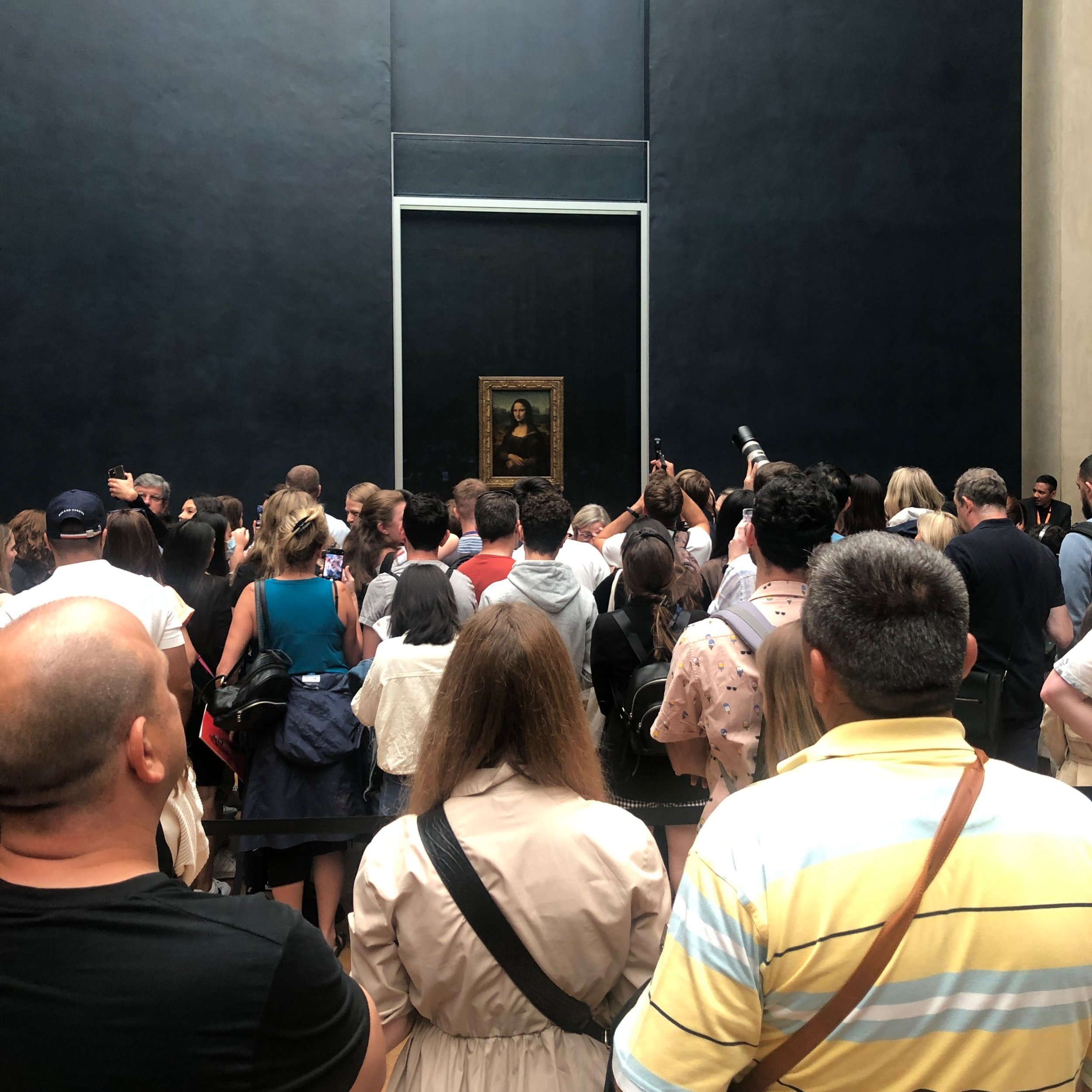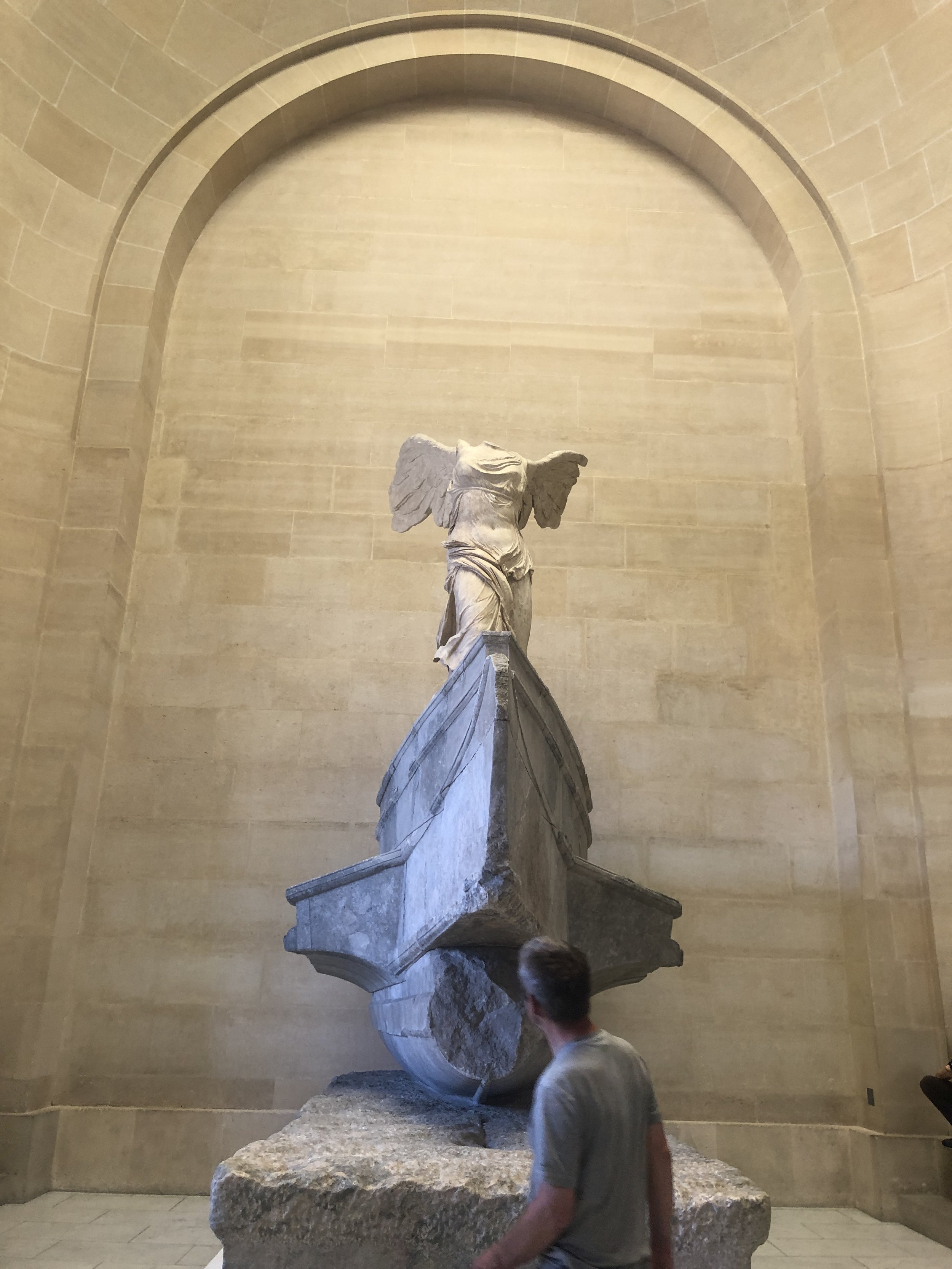Beyoncé and the Louvre. Why museums need more popstars?
Beyoncé as Lady Godiva, Brad Pitt as Ophelia. These are not theatrical roles. These are celebrities linking themselves to mythical and literary figures depicted famously in art works.
A queue to see Leonardo da Vinci’s Mona Lisa, 1503-1519 at the Louvre
On the cover of her latest album Beyoncé is almost naked atop a white shining horse. Social media swiftly drew parallels with a 19th-century painting of Lady Godiva. Beyoncé is one of the most recognisable artists today. A little extra publicity does not hurt anyone, but why would art references be drawn at all? One reason may be the album’s title, Renaissance – for many a significant historical period characterised by revolutionary artists such as da Vinci.
This is not the first time Beyoncé has associated herself with the great Italian. Her and Jay-Z’s video for ‘APESH*T’ was filmed at the Louvre in front of the most famous painting in the word – the inimitable Mona Lisa – among many others. How many? Seventeen. That is the number of works that appear in the video and the number of stops in the Louvre’s trail based on it.
Venus de Milo (150-125BC) and her admirers
To say that the collaboration is surprising is an understatement. Unusual – no. Popular culture has claimed its place within museums. The Victoria and Albert Museum in London is particularly good at channelling its of-the-times credentials. If you opened their website in Spring 2022 you would have been met by Harry Styles (the poster boy for their incredible Fashioning Masculinities show), currently it is Africa Fashion. But while the V&A was founded to showcase innovation, Louvre is a bastion of tradition.
Could Louvre need publicity? Sold out tickets and long queues suggest otherwise. Is Beyoncé in need of validation? The most famous artist in the world: why would she need any more validation? But both sides get something out of it. It is a symbiosis of art – not necessarily high and low, more old and new. Masterpieces change from period to period. A Sphinx is not the same as a sculpture of a Greek Goddess, which in turn is not the same as a nineteenth century painting, or a twenty-first-century music video. Yet all have cultural, aesthetic, and social values.
Detail of Veronese’s The Wedding Feast at Cana, 16th Century
It is not the first time the Louvre has gone the popular way – there was a Da Vinci Code trail based on Dan Brown’s blockbuster. But today the values that museums like Louvre stand for are increasingly coming under interrogation. Complaints include the lack of women artists in the collection, and a need to acknowledge colonial links both within the works, and in origin of the works. The choices that Beyoncé and Jay-Z made for their video are possibly about more than mere beauty or the fame of the art works. What were those choices?
Last month I went to Paris with my family and we decided to visit the Louvre, not for the first time. On previous visits I would run in, take the museum map and follow it and the crowds around les chefs d’oeuvres. This time I had a grumpy teenage daughter and a not much happier middle-aged husband with me, and I reckoned I should prepare in advance. I opened Louvre.fr in hope of inspiration.
Andrea Solario, The Virgin of the Green Cushion, 1507-1510
The website invited me to ‘Escape with the Louvre’. It is also very proud of the fact that the museum’s entire collection of 480,000 works is on the platform – accessible through the website. That’s a little too much for one day. If you want to narrow it down, say to sculpture only – that’s still over 36,000. So I checked the guided tours. But they only take you around the highlights, happen once a day and not even every day, and you need to make sure you get the right language (four are offered).
Finally, I clicked on Visitor Trails. In my experience, London museums tailor trails for families with small kids. They usually take you around the child-friendly exhibits, which means works that include images of animals. But Louvre went a different way! There were in fact four trails. The inevitable Masterpieces; a family trail of the Egyptian collection; the second A-list – secret treasures of the Richelieu wing – if that tells you anything. Finally, the fourth: Beyoncé and Jay-Z’s highlights. Do you remember that I had a teenager with me? This was a ‘yes, please’ moment.
Detail of Hermes fastening his sandal, after Lysippos
The trail is based on their music video ‘APESH*T’, which isn’t on the Louvre’s website, but there are stills from it included in the online trail guide. It is very neatly laid out, there are precise instructions where to go, a photo of each artwork, plus a short description.
There are also suggestions as to why each work was chosen by the pair to appear in the video, but generally you are left to join the dots. Some are more straightforward, such as Aphrodite, known as The Venus de Milo, or The Raft of the Medusa by Théodore Géricault. Both are undisputed Louvre masterpieces, more importantly both have significant modern-day relevance. The Venus de Milo is one of the most referenced art works in contemporary art, but it also suggests the existence of an ideal female beauty – which social media has made into a problematic and pressing issue. The Raft of the Medusa was scandalous when it was created and remains topical as a painting that deals with both colonialism and slavery.
The Winged Victory of Samothrace
No trail is quite complete without a couple customary animals – especially since these details appear prominently in the music video. Possibly it is not only children who enjoy seeing them. Our attention is drawn to the little dog in The Wedding Feast of Cana by Veronese and the horse’s terrified eye in The Charging Chasseur by Géricault. The dog was apparently criticised by the Holy Tribunal of the Inquisition for being inappropriate. The horse’s reaction contrasts starkly with that of its rider, who has developed some weariness.
Juxtaposition of characteristics seems to be a trait that the singers want to draw attention to. In The Virgin of the Green Cushion by Andrea Solario, the Mother of God is shown just as a mother – breastfeeding her rather playful child. Hermes fastening his sandal, after Lysippos, is an image of another God doing a very human thing – tying his shoe.
Detail of Jacques-Louis David’s The Intervention of the Sabine Women, 1799
There are the big greats such as Leonardo da Vinci’s Mona Lisa (which has a very long proper name: Portrait of Lisa Gherardini, wife of Francesco del Giocondo, known as the Mona Lisa) and Nike, aka The Winged Victory of Samothrace. These two appear in more significant scenes in the video. The pair face us together with La Gioconde first and then turn to it at the very end – a reference possibly to their status as cultural icons at present, paying last minute homage to the great lady. Nike towers above a set of spectacular steps on which in the video dancers imitate wavy seas with Beyoncé and Jay-Z presiding over in white outfits.
Some works seem to have been chosen for their depictions of passion and drama. Among these, the Pietà by Rosso Fiorentino and The Shades of Francesca da Rimini and Paolo Malatesta appear to Dante and Virgil by Ary Sheffer. Both works are about death and grief, the second one is a reminder of the role of poets in transmitting the messages for posterity. Possibly a reference to that role now being played by pop stars.
The Great Sphinx of Tanis, 2600-2500BC
There are four paintings by Jacques-Louis David – they all happen to be in the same grand room – three focus on women. One depicts the moment of the Coronation of the Empress Josephine by Napoleon – that other power couple. Another is a very modern-looking (mostly because it is unfinished) portrait of an eighteenth-century socialite and influencer of her time. The third one The Intervention of the Sabine Women is about women bringing about reconciliation between warring parties – a reference to the contemporary context of post-revolutionary France, but also a topical painting for our time, characterised by binary oppositions in both domestic and international politics.
Some works may have been chosen for their grandeur, such as the ceiling in the Gallerie d’Apollon. Others for their reference to non-European history such as The Great Sphinx of Tanis. You must weave your way through the crowds to see either of those two popular attractions. The final work in the tour takes you up to level 2 of the Sully wing – a surprisingly quiet and contemplative place. Portrait of a Black Woman by Marie-Guillemine Benoist.
Marie-Guillemine Benoist, Portrait of a Black Woman, salon of 1800
It is rare to find a work by a woman artist at the Louvre, especially one that depicts a black person. The Louvre suggests that the sitter is ‘depicted according to the convention of society portraiture.’ Really? I would like to see these other examples of genteel society ladies shown with their naked breasts. However, it is true that Benoist painted an ex-slave at a time when abolition was a hot topic. To do that as a female artist seems daring. This is at once a rare and a problematic work.
How much of what I wrote here actually was part of the thought process for making the video is unknown. Could some works appear just for their decorative qualities? Could there be more to read into each choice? We don’t know.
Do museums need popular culture to shake them up a bit? For sure. This trail led me to art works I have never considered seeing previously. It has also allowed me to consider them in the current context. Could museums go further and expand their trails without the help of popstars? It would certainly be a worthy exercise. Beyoncé and Jay-Z already suggested some routes – women, colonialism, race, humanity, and animals (where would be without them?) – all that is left is to follow them.










